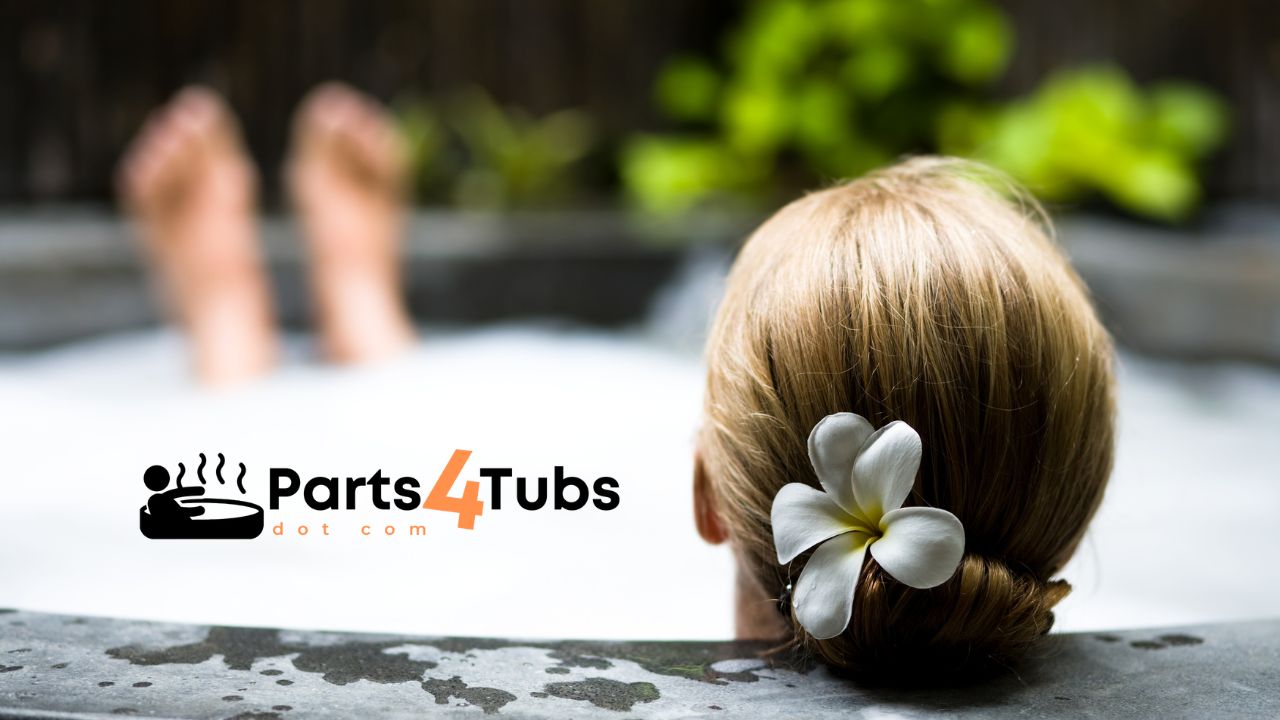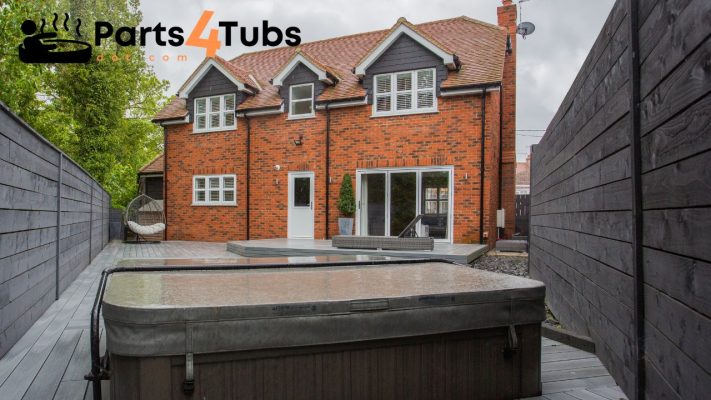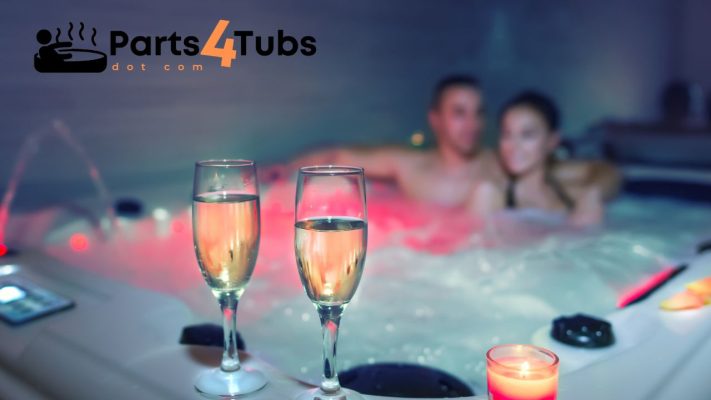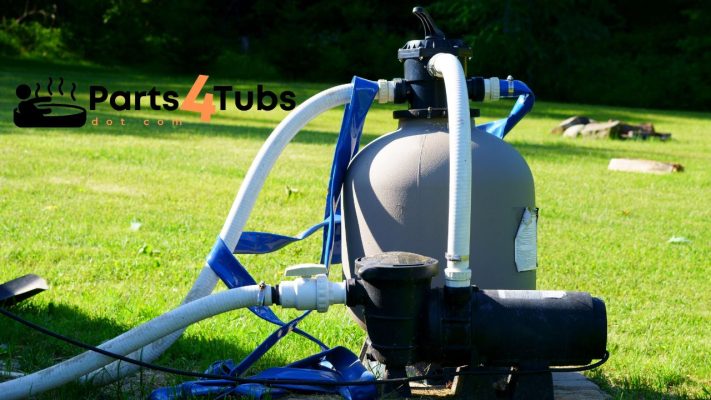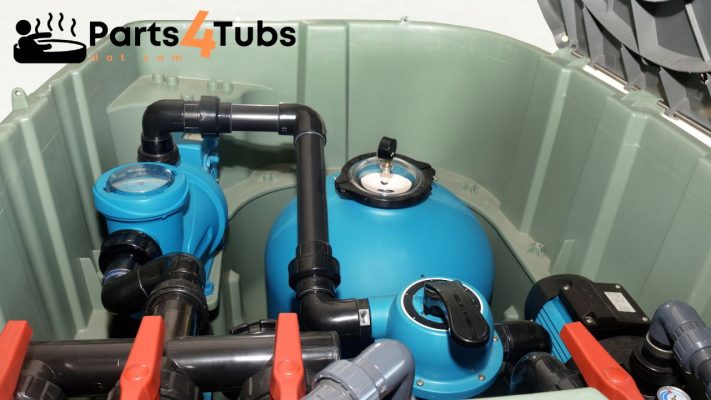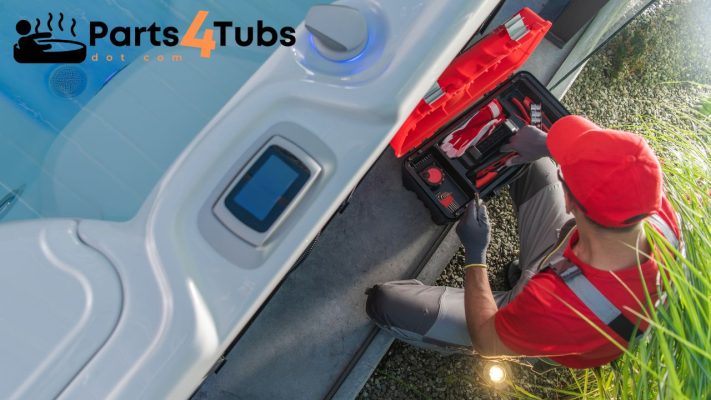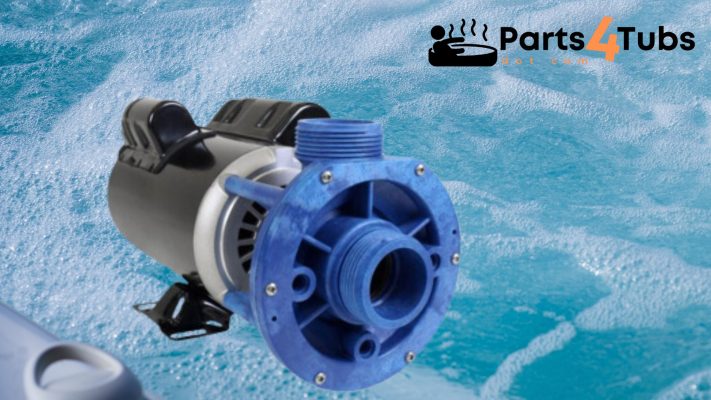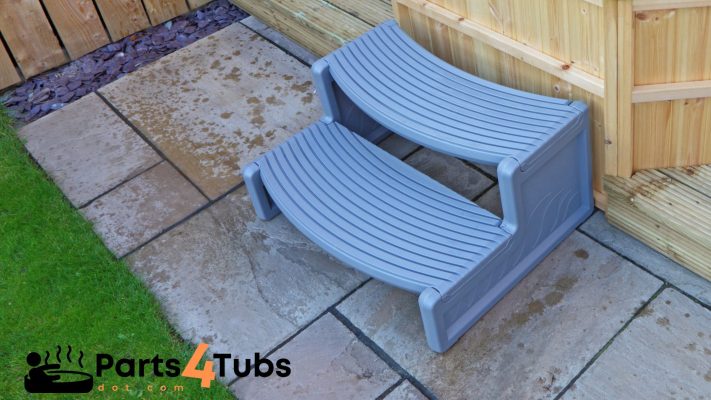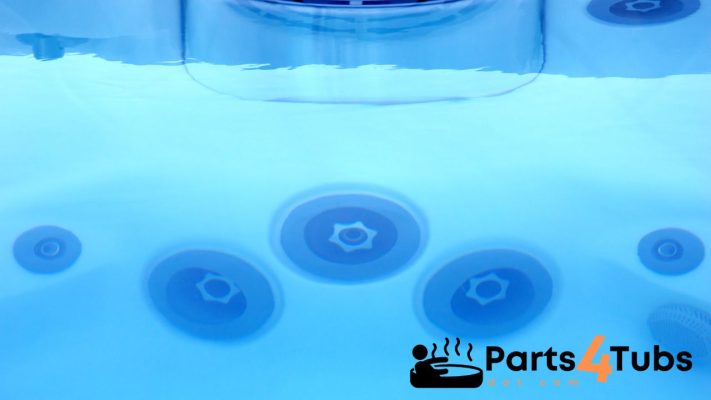Hot Tub Parts Related
Circulation Pumps For Hot Tubs – all you need to know
Welcome to my blog, where we delve into the fascinating world of hot tubs and all the essential components that make them work like a charm. I’m Andi, a hot tub design consultant, and I’m thrilled to share my expertise with you.
Today, we’re going to explore one crucial element of hot tubs: circulation pumps. These small but mighty devices play a vital role in keeping your hot tub water clean, clear, and properly filtered. Understanding how circulation pumps work and their importance in maintaining a well-functioning hot tub will empower you to make informed decisions about your spa.
So, let’s dive in and discover the wonders of circulation pumps in hot tubs!
What are circulation pumps for hot tubs?
Circulation pumps are an integral part of hot tub systems. As their name suggests, their primary function is to circulate water throughout the hot tub, ensuring proper filtration and maintaining water hygiene. Unlike jet pumps, which are responsible for powering the jets and creating the massaging effect, circulation pumps are designed specifically for continuous water circulation.
These pumps work quietly and efficiently, operating (in some cases) 24/7 to keep the water in your hot tub moving. Those that don’t operate 24/7 do so on a filter cycle that you set on the tub.
They draw water from the hot tub, pass it through the filtration system to remove impurities, and then return the filtered water back into the tub. This continuous circulation helps distribute chemicals evenly, prevents stagnant water, and ensures that the water remains clean and clear.
Circulation pumps also play a crucial role in maintaining consistent water temperature. By continuously moving the water, they help distribute the heated water from the heater throughout the hot tub, ensuring a comfortable and enjoyable soaking experience.
In addition to filtration and temperature control, circulation pumps are energy-efficient. They consume much lower power compared to jet pumps, making them cost-effective to run for extended periods, such as during filtration cycles.
Overall, circulation pumps are the unsung heroes of hot tubs, silently working behind the scenes to provide you with clean, filtered, and properly circulated water. Without these pumps, maintaining water quality and a relaxing spa experience would be a challenging task. So, let’s give credit to the humble circulation pump for its vital role in keeping our hot tubs in top shape!
How do circulation pumps for hot tubs work?
Circulation pumps for hot tubs operate on the principle of centrifugal force and utilize an electric motor to drive their functionality. Let’s take a closer look at how these pumps work.
Inside the circulation pump, you’ll find an electric motor that drives a small impeller. The impeller is a rotating component with curved blades that are strategically designed to create a centrifugal force. This force pushes the water towards the outer edges of the impeller, creating a low-pressure area in the center.
When the pump is turned on, water is drawn into the center of the impeller through an inlet, also known as the inward suction. The rotating impeller then propels the water outwards, into a volute or chamber surrounding the impeller.
This volute gradually increases in size, which converts the kinetic energy from the rotating impeller into pressure energy.
To ensure the pump starts smoothly, it is equipped with capacitors. Capacitors provide an extra boost of electrical charge during startup, allowing the motor to overcome inertia and begin rotating the impeller.
Once the pump is running, the capacitors are no longer in use.
The circulation pump is connected to the plumbing system of the hot tub, with water being drawn in from the spa and expelled back into the tub through the jets or other outlets. The continuous flow of water helps with filtration, as it passes through the filter media, trapping and removing debris and contaminants.
Overall, circulation pumps for hot tubs rely on the centrifugal force generated by the impeller to draw in and propel water, creating a constant circulation within the system. This continuous movement ensures effective filtration, optimal distribution of heat and chemicals, and helps maintain the cleanliness and clarity of the water in your hot tub.
Control System, Balboa, BP Series, BP2000G1, 5.5KW, 800 INC, BP2X, WiFi Capable | ||
Control System, Balboa EL84P, 5.5Kw, 230V, 4-Pump, Blower, Ozone, Circ Pump, Less Spaside and Cords | ||
Adapter, Spaside Control, Sundance, Sunmart Mini Adapter, Din/Ribbon | ||
Outdoor Control System, Air, Len Gordon AS-TCTD, On/Off, 20Amp, 10Min Delay | ||
Pressure Switch, Presair, SPST, 10 Amp, 1.4 Psi, 1/8" NPT | ||
Circuit Board, Master Spa, (Balboa) MS501X, 2015-current | ||
Circuit Board, Balboa VS100, Digital Duplex, Pump1, 8 Pin Phone Style Connector, 115v/230v | ||
Spaside Control, Dimension One (Gecko) TSC25, 8-Button, LCD, No Overlay | ||
Spaside Control, Balboa, TP400W, BP Series, LCD, 4-Button, Warm-Cool-Light-Jets, 7' Cord w/4 Pin Molex Plug | ||
O-Ring, Heater, For 1.5-4-1A/B |
What parts are there for circulation pumps for hot tubs?
Circulation pumps for hot tubs consist of several essential parts that work together to ensure proper water circulation and filtration. Let’s explore these key components:
Motor:
The motor is the heart of the circulation pump. It is typically an electric motor that powers the impeller, generating the necessary centrifugal force to move the water.
Impeller:
The impeller is a rotating component with curved blades. It is driven by the motor and creates the centrifugal force required to draw in and propel the water. The impeller design and size can vary depending on the specific pump model and its intended flow rate.
Volute:
The volute is a chamber surrounding the impeller. It gradually increases in size, allowing the conversion of kinetic energy into pressure energy as water is expelled from the pump. The volute helps optimize the pump’s efficiency and water flow.
Housing or Wet End:
The housing, also known as the wet end, encloses the impeller and volute. It protects these components and ensures that water flows smoothly through the pump. The housing is typically made of durable materials such as plastic or stainless steel.
Capacitors:
Capacitors are electrical components that provide an extra boost of electrical charge to the motor during start-up. They help overcome inertia and initiate the rotation of the impeller. Capacitors are important for a smooth start and are typically specific to the motor used in the circulation pump.
Inlet and Outlet:
The circulation pump has designated ports for the inlet and outlet. The inlet, often referred to as the inward suction, is where water is drawn into the pump from the hot tub. The outlet is where the pressurized water is expelled back into the tub, ensuring continuous water circulation.
Seals and O-rings:
Seals and O-rings are used to prevent leaks and maintain the integrity of the pump. They are located at various points, such as the housing and connections, to create a watertight seal and prevent water from escaping.
These are the primary parts found in circulation pumps for hot tubs. Each component plays a crucial role in maintaining water circulation, filtration, and overall performance. It’s important to ensure that these parts are properly maintained and, if needed, replaced with high-quality replacements to keep your hot tub running smoothly.
What do I need to look for when choosing circulation pumps for a hot tub?
When choosing a circulation pump for your hot tub, there are several factors to consider to ensure you select the right one for your specific needs. Here are some key points to look for:
- Flow Rate:
- Determine the flow rate suitable for your hot tub size.
- Ensure the circulation pump can efficiently circulate and filter the water.
- Horsepower (HP):
- Consider the horsepower rating that matches your hot tub requirements.
- Higher horsepower enables better water circulation and flow.
- Compatibility:
- Check the specifications, connections, and dimensions of the circulation pump to ensure compatibility with your hot tub model and plumbing system.
- Verify that it will fit properly and can be easily installed.
- Quality and Durability:
- Choose a circulation pump from a reputable manufacturer known for producing high-quality and durable products.
- Look for corrosion-resistant materials and robust construction suitable for the hot tub environment.
- Energy Efficiency:
- Consider the energy efficiency ratings and features of the circulation pump.
- Opt for pumps that help reduce operating costs and minimize power consumption while maintaining effective water circulation.
- Noise Level:
- Look for circulation pumps designed to operate quietly.
- Noisy pumps can disrupt the peaceful ambiance of your hot tub experience.
- Warranty and Support:
- Check the warranty provided by the manufacturer.
- Longer warranty periods often indicate the manufacturer’s confidence in the product’s quality.
- Consider the availability of customer support and technical assistance in case of any issues or questions.
By considering these factors and using them as a guide, you can make an informed decision when choosing a circulation pump for your hot tub. Always consult the manufacturer’s guidelines and recommendations specific to your hot tub model for further guidance and ensure proper installation.
Can I replace circulation pumps for hot tubs?
Yes, circulation pumps for hot tubs can be replaced. Over time, circulation pumps may experience wear and tear or malfunction, requiring a replacement. Here are the steps involved in replacing a circulation pump:
- Identify the Problem:
- Determine if the circulation pump is indeed the source of the issue by diagnosing the problem with the help of a professional or troubleshooting guide.
- Common signs of a failing circulation pump include poor water circulation, unusual noises, or leaks.
- Obtain a Replacement Pump:
- Find a suitable replacement pump that matches the specifications of your existing pump and is compatible with your hot tub model.
- Ensure that the new pump meets the flow rate, horsepower, and connection requirements of your hot tub.
- Drain the Hot Tub:
- Before replacing the circulation pump, drain the hot tub to a level below the pump to prevent water spillage during the installation process.
- Disconnect Power:
- Turn off the power supply to the hot tub to ensure safety while working on the electrical components.
- Disconnect Plumbing Connections:
- Carefully disconnect the plumbing connections that are connected to the circulation pump.
- Take note of the connections and their positions to ensure proper reconnection later.
- Remove the Old Pump:
- Unscrew the mounting bolts or clamps that secure the old pump in place.
- Gently remove the old pump from its position, taking care not to damage any surrounding components.
- Install the New Pump:
- Position the new circulation pump in place, aligning it with the mounting holes or brackets.
- Secure the pump using the appropriate mounting bolts or clamps.
- Reconnect Plumbing Connections:
- Reconnect the plumbing connections to the new circulation pump, ensuring a proper and secure fit.
- Use appropriate fittings or couplings if needed.
- Test and Check for Leaks:
- Restore the power supply to the hot tub.
- Test the new circulation pump to ensure proper operation and water circulation.
- Check for any leaks around the connections and make adjustments if necessary.
- Refill and Balance Water:
- Refill the hot tub with water, following the manufacturer’s guidelines.
- Balance the water chemistry, adjusting pH, alkalinity, and sanitizer levels as needed.
If you’re unsure about replacing the circulation pump yourself, it’s recommended to seek the assistance of a qualified technician or hot tub professional to ensure proper installation and avoid any potential issues.
Conclusion
In conclusion, circulation pumps are essential components of hot tubs, responsible for maintaining water circulation, filtration, and overall performance. When considering the replacement of a circulation pump, it’s important to identify any issues and determine if a replacement is necessary.
Choosing a suitable replacement pump that meets the flow rate, horsepower, and connection requirements of your hot tub is crucial. Following proper installation procedures, such as draining the hot tub, disconnecting power, and reconnecting plumbing connections, ensures a successful replacement. Remember to test the new pump, check for leaks, and balance the water chemistry to optimize the performance of your hot tub.
If you’re unsure about the replacement process, get in touch! By maintaining and replacing circulation pumps as needed, you can enjoy a well-functioning hot tub that provides relaxation and enjoyment for years to come.
Happy Hot Tubbin’
Andi
Can I Help You?
If I can help you in any way I would love to hear from you. You can get in touch using the form below.
Thanks - Andi

